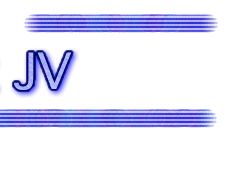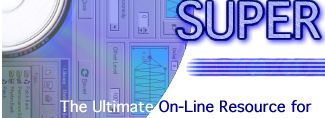


Total parameter editing for JV / XP series Roland Synthesizer

 |
 |
|
 |
|
|
Patch MorphingThe patch morphing permits to create a patch or a whole bank choosing between two patches: The starting one and the ending one. The parameters of the starting patch can be changed using some criterios till we arrive to the values of the ending patch. For a simplicity reason we can think that, as we created a bank patch with the morphing, the patch n.1 is the starting one and it has as morphing factor the value 1. While the patch n.128 is the ending (arrival) patch and it has as morphing factor the value 128. The patches to which we are more interested are the ones that go from n.2 to n.127 and are those created with the morphing function. We must remember that this algorithm doesn't create a bank of patch random, but a series of patches that, starting from the first, change slowly till you arrive to the last one. The interesting things is that the created patch can give some surprise. One case, can be the one of some interesting synth sounds created starting from a sax or a piano patches. In the top part of the patch morphing window we can find two groups of parameters: Morph On and Include Parameters. Using the first group of parameters you can communicate to the program if you want to inlcude or not the Common Patch and the four tones in the Morphing Patch. If one of the tones isn't included in the morphing the created patches will have in the correspondent tone the parameters of the starting patch. The second group of parameter permit to intervene in a specific way on the characteristic of the created patches including them or not in the new calculation of the value during the morphing. You must remember that all the parameters are calculated again for the creation of new patches, but only the ones in the Include Parameters group can be excluded. We should also talk about the option Parameter EFX. With it you can decide if the effect parameters must be calculated again in the Morphing. But this option is activated (it can be selected or not) only if the effects of the starting patch and of the ending patch (the last) are identical. If not the option will be disabled and the created patches will have the values of the section parameters same effect of the ones of the starting patch. You should also notice how some parameters are, for default, formulated on off, like Coares Tune and Fine Tune. These two parameters establish the transposition of the single tone (in semitone the first and in hundredth part of semitone the second) but can cause some undesidered effect on the sound. Lets explain the reason. Imagine for a while the morphing between two patches that have the Coarse Tune parameters formulated on the following values: T1 T2 T3 T4 Starting Patch -12 -24 0 +12 Arrival Patch +12 0 +12 -12 The created patch will have the Coarse Tune values between the starting and the ending ones and could be formulated on the following values: T1 T2 T3 T4 Created Patch -5 -8 +9 +1 This kind of patch would be surely useless for the untunement and the beatment of the single tones. For this reason you can include or not these parameters remenbering that, if they are excluded, the created patch will have the same value of the starting patch in the correspondent parameters. In the bottom part of the window we can find a fader situated between the two patches in which the morphing is getting done. The position of this fader is indicated by the Patch Morphing Value situated on top of the fader. Going down, from left we can find: The <Close> which permits to escape from this window, the <Create> button that activates the morphing and the creation of a whole patch bank. With Note Lenght and Step Lenght we can choose respectively: The lenght of the note for the preview and the interval of the Morphing values for the automatic creation procedure and listening that can be activated by pressing the Play button situated on the right. With the <Stop> button the automatic morphing stop. The morphing function can be effected also in manually way moving in the desired position the fader cursor. When you release it the preview of the created sound will be activated automatically in that moment. |